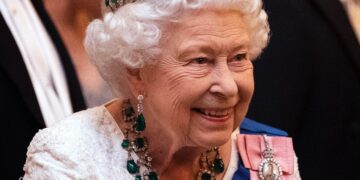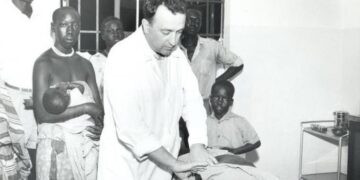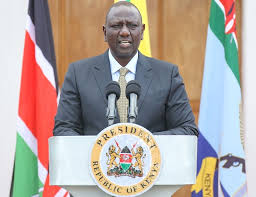Kenya’s embattled president has announced a plan to form a new “broad-based government” following weeks of deadly anti-government protests sparked by an unpopular tax bill.
However, six of the 11 ministers President William Ruto proposed in Friday’s address were from the cabinet he sacked just last week.
When dismissing that cabinet, Mr Ruto had said the move came after “reflection and listening to Kenyans”.
On Friday, he said the “crisis” Kenya was experiencing was lesser than the “opportunity” before the country.
The demonstrations, in which more than 40 people died, began as a response to the tax rises.
However, after the government withdrew these proposals, the predominantly young protesters broadened their demands.
Recently, they have been calling for President Ruto to resign.
After he sacked his cabinet last Thursday, Kenya’s police chief resigned.
Human rights groups had accused police of shooting dozens of protesters, some of them fatally, and abducting or arbitrarily arresting hundreds more.
On Friday, Mr Ruto said the 11 ministers he proposed were a “first batch” that would have to be approved by lawmakers in the National Assembly before being appointed.
One of the most notable names put forward by the president is Kithure Kindiki, who if appointed, would resume his position as the interior minister.
This is despite numerous calls for him to resign over the way the police and armed forces handled the protests.
As for the other key ministries, Mr Ruto put forward Debra Mlongo Barasa for minister of health, Julius Migos Ogamba for minister of education and Aden Barre Duale for minister of defence.
Mr Ruto said he had promised Kenyans he would “craft a broad-based government that would harness the enormous potential in our country to turbocharge our economic transformation and inclusive growth”.
However, many Kenyans expected the new cabinet to not contain figures from the old one. They also expected it to be younger and dominated by professionals from various industries, as opposed to long-time politicians and presidential allies.
Mr Ruto ended his address by saying he would announce more names “in due course”.
The president previously said he would draw on opposition lawmakers for his new government.
The former prime minister and defeated presidential candidate, Raila Odinga, was said to be keen on this idea – local media reported that his Azimio coalition were due to get seven positions in a new cabinet.
However, this plan divided the opposition.
Some of Mr Odinga’s fellow party leaders, including his former presidential running mate Martha Karua, said they would not participate in a coalition government with Mr Ruto.
Ms Karua said it was time to “clean up the country”, adding that young people were already leading the way in doing so.
Who is among the 11 proposed ministers?
- Kithure Kindiki – Minister of interior
- Debra Mlongo Barasa – Minister of health
- Alice Wahome – Minister of lands, public works, housing and urban development
- Julius Migos Ogamba – Minister of education
- Aden Barre Duale – Minister of defence
- Andrew Mwihia Karanja – Minister of agriculture
- Roselinda Soipan Tuiya – Minster of environment
- Eric Muriithi Muuga – Minster of water, sanitation and irrigation
- Davis Chirchir – Minister of roads and transport
- Margaret Nyambura Ndung’u – Minister of information and communication
- Rebecca Miano – Attorney-general
The BBC News
















